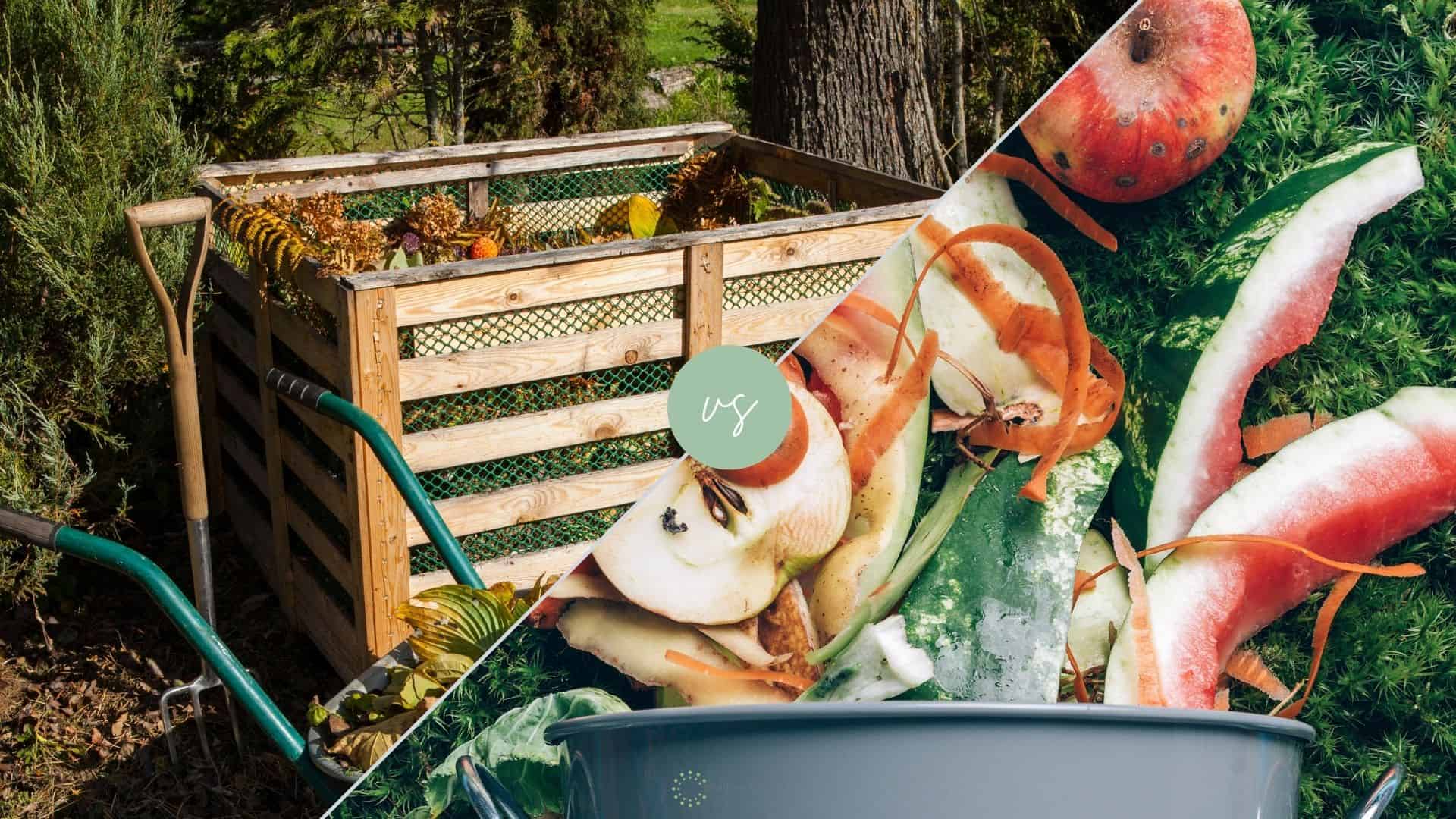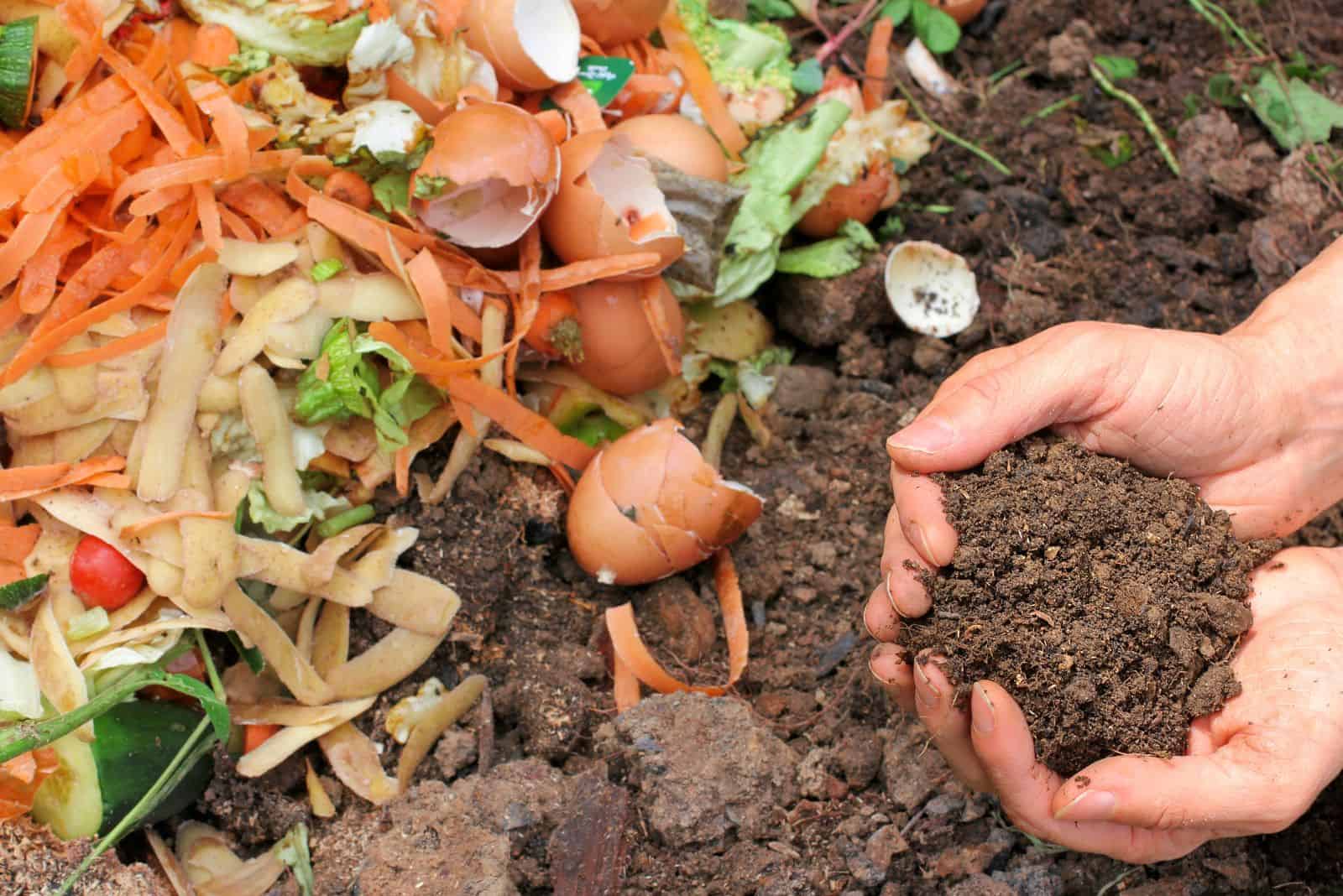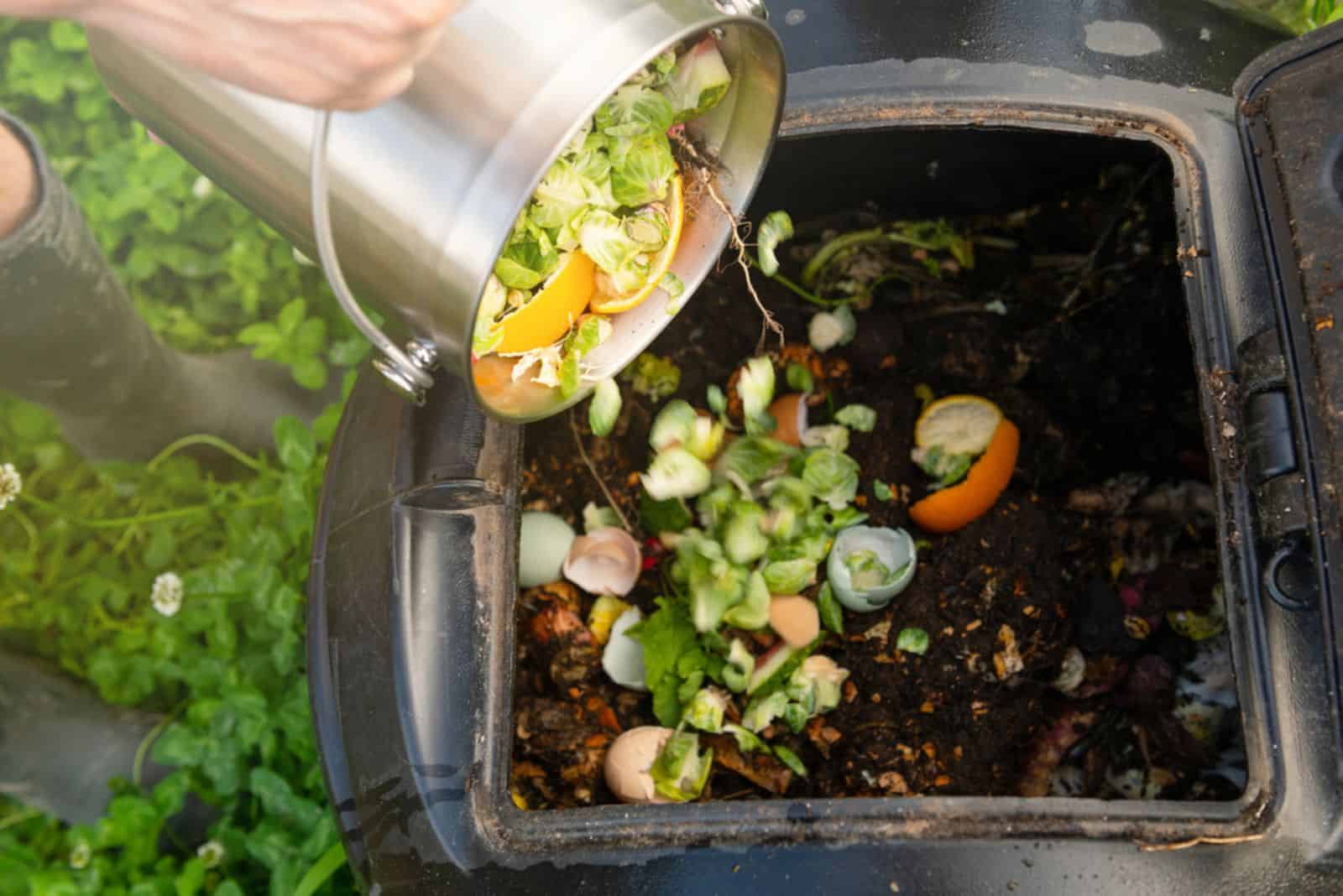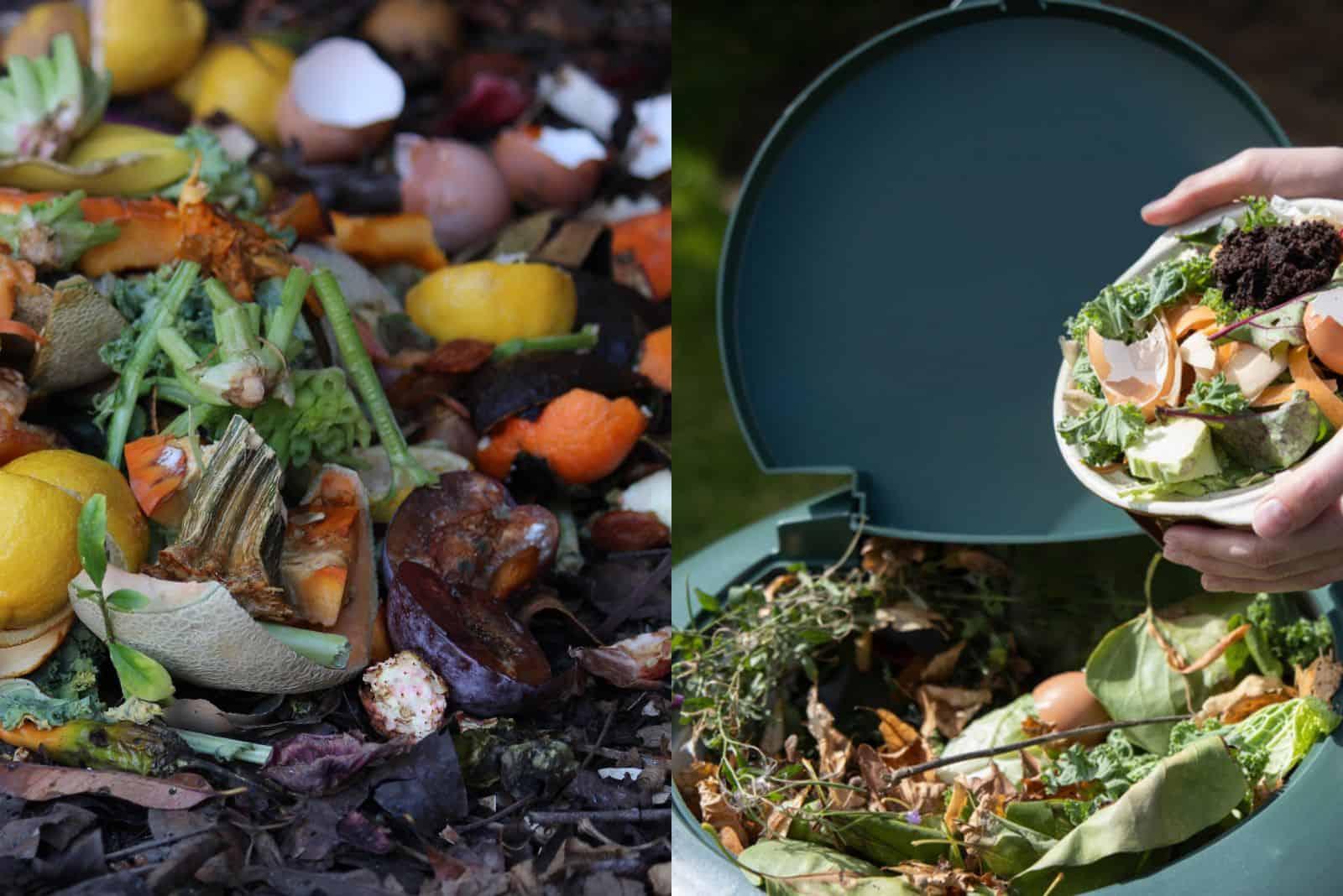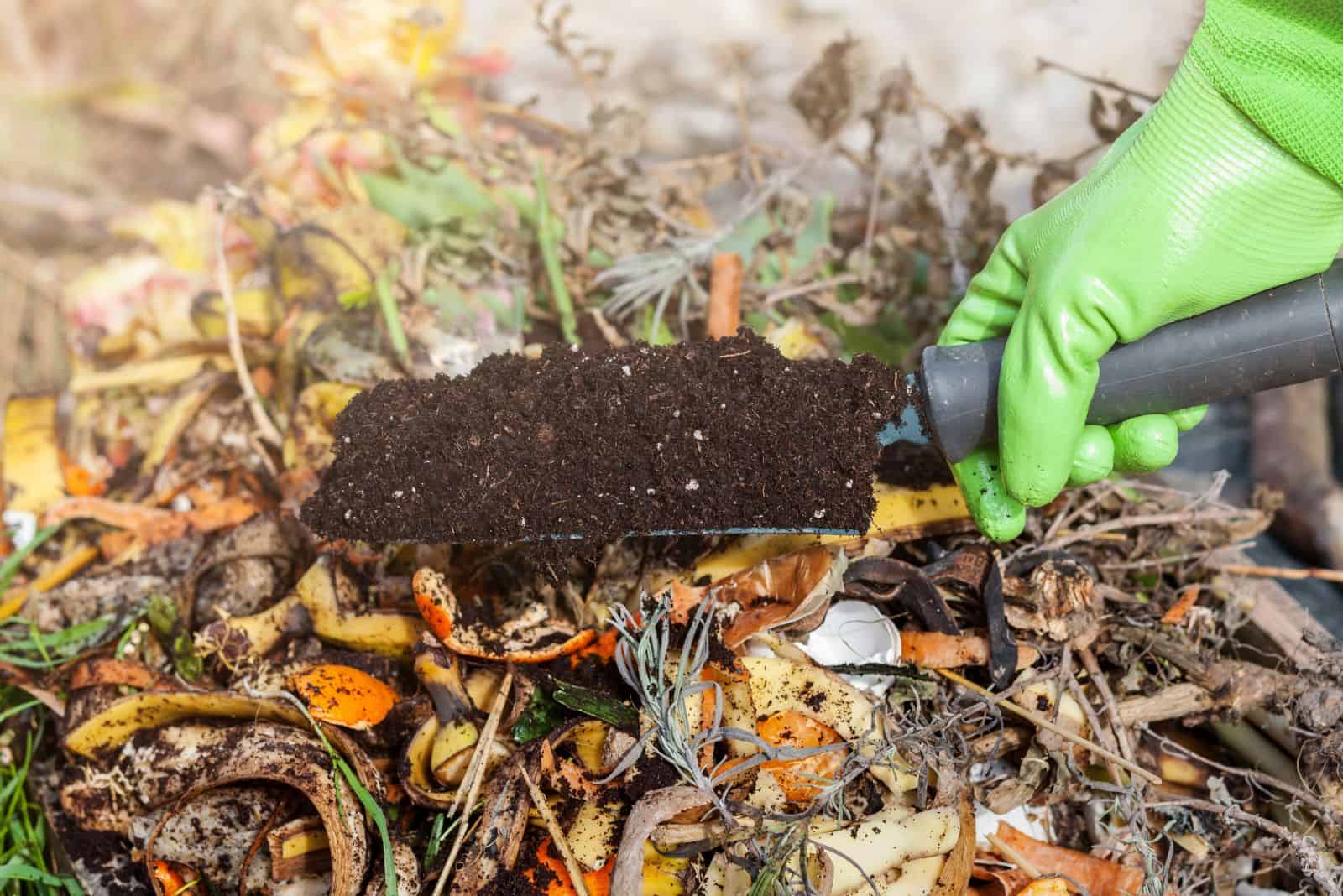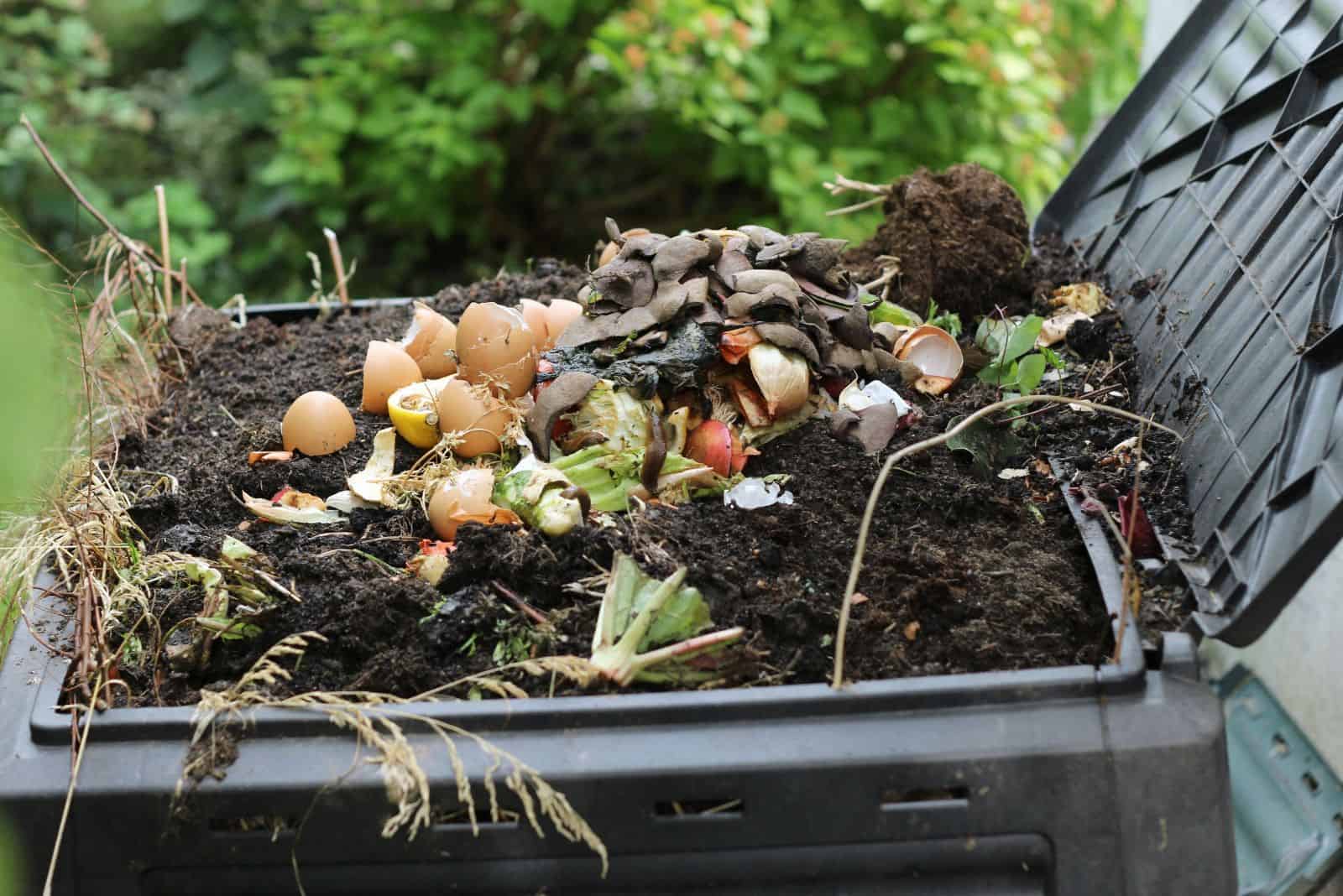Composting brown materials and kitchen scraps is an environmentally friendly way of producing organic material for your plants and saving some money you would otherwise spend on fertilizers.
However, it isn’t as simple as piling up all your garden waste and calling it a day. You have to turn it frequently, add a compost starter, etc.
But before all that, you have to decide whether you want a compost bin or a pile in your backyard. Both methods have their benefits; one takes up less space, the other is cheaper, etc.
Below, you can read about the factors that will help you decide between compost pile vs bin so that you can start composting today.
[table id=606 /]
Compost Pile vs Bin
The main difference between a compost pile and a compost bin is how they are contained. A compost pile is simply a pile of organic matter left to decompose, while a compost bin is a container that holds the materials as they break down.
And once you choose your composting method, you can make the best compost for your vegetable garden, such as vermicompost (or worm compost), leaf clippings, manure, etc.
What Is A Compost Pile?
A compost pile is a pile of organic materials such as leaves, grass clippings, fruit and vegetable scraps, coffee grounds, eggshells, and other yard waste left to decompose on their own.
They can be as small or as large as you want them to be, depending on the amount of composting material available and the space you have to store the pile. To create a compost heap, find a flat, dry area in a sunny location, and start layering the materials.
It’s essential to have a good balance of brown materials (leaves, straw, sawdust) and green materials (grass clippings, food scraps) in order to get the right balance of carbon and nitrogen.
Add water to the pile to keep it moist and occasionally turn it to achieve proper aeration, which will help to speed up the decomposition process.
It can take several weeks or even months for a compost pile to decompose fully, depending on the size and the materials. Once the material in a pile has broken down and has a uniform, dark, crumbly texture, you can use it as a soil amendment.
There are two types of compost piles, hot and cold, and we’ll discuss them thoroughly in the following paragraphs.
Hot Compost Pile
A hot compost pile is a method of composting carbon and nitrogen-rich materials and maintaining high temperatures (usually between 131-170°F) throughout the composting process.
The high heat helps to kill off any harmful pathogens and weed seeds that may be present in the organic material and also speeds up the decomposition process.
A hot compost pile is also called an “aerobic compost pile,” as the high heat creates optimal conditions for the aerobic microorganisms that break down the decomposing material.
To create this heap, you need a balanced amount of nitrogen and carbon-rich materials and water to keep it moist. Turn the pile regularly as it cools down, and soon you’ll have your own compost.
Pro tip: If your compost pile doesn’t heat up, it could be that there’s a lack of or excess moisture or that you didn’t add enough nitrogen-rich materials, such as manure.
Here are some more tips for creating your own hot compost pile:
Cold Compost Pile
The temperature of a cold compost pile is similar to the ambient temperature and doesn’t exceed 130°F.
Because of this, it is also called an “anaerobic compost pile,” as the conditions aren’t ideal for aerobic microorganisms to decompose the organic waste.
You need the same green and brown materials, food waste, etc., as when creating a traditional compost pile, although you don’t need to water or turn it, so it’s much less labor-intensive than the previous method.
However, a cold compost pile is more time-consuming as you just let it happen naturally, so be prepared for that. If you live in an arid region, you can add some water during prolonged dry spells.
Finally, because the pile doesn’t generate a lot of heat, some harmful bacteria, such as E. coli, may remain, so be careful when using it in your vegetable garden.
What Is A Compost Bin?
A compost bin is a container used to hold organic matter as it decays. They are made from a variety of materials, such as wood, plastic, or metal, and come in many different sizes and designs.
Compost bins have a special design that lets them contain the compost while allowing air and moisture in, which are necessary for the composting process.
Start layering the brown and green materials like in a compost heap, and the bin will contain and compact them. Add moisture and turn the ingredients from time to time, and if you hate mixing, you can always get a compost tumbler to do the hard work for you.
Finally, many bins come with lids and have access or a door at the bottom you can use to extract finished compost.
Choosing Between Compost Pile vs Bin
Reading about all the benefits of worm, mushroom, or loam-based compost can inspire us to make a homemade version to reduce the waste we produce and enrich our garden beds at the same time.
Even after we’ve defined the compost heap and bin, we still don’t know which one to use. Therefore, we brought you nine factors that examine these methods, which will help you settle on one of them.
1. Size And Space They Take Up
Compost bins are perfect for gardens with limited space. Piles generally require more room because they don’t have any walls around them to keep them in place.
Even small compost heaps require a larger area because you need to turn them. And if you create a pile too small, the decomposition process won’t be as effective.
Furthermore, compost bins keep everything in place, but you cannot adapt them to fit more waste materials than they already do.
You can always adapt piles, making them smaller or larger to fit the amount of space you have.
2. Animal Access
Bins are generally more effective at keeping scavengers and rodents away from your compost than piles.
Of course, you can try and protect your compost heap with chicken wire or some other barrier, but they’re not as effective as the actual walls of a compost bin.
3. Attracting Flies
Flies in compost are one of the things that discourages us from making our own compost. Luckily, many compost bins come with lids that reduce fly activity by preventing access to the compost material.
Piles, on the other hand, just sit in the open, so flies can easily access them.
4. Spreading Unpleasant Smell
Composting may produce foul odors, especially if you’ve used more nitrogen-rich materials. One of the downsides of compost heaps is that they cannot contain the smell.
Luckily, bins come with lids you can close to reduce the smell, so you can compost even near your home.
5. Amount Of Compost
In this category, the compost pile is the winner. There’s no limit to how much compost you can produce other than the space you have in store for it.
Compost bins, on the other hand, are restrained by their four walls, so you won’t be able to produce as much compost.
6. Time To Produce Compost
When it comes to how long it takes to make compost, the answer is at least 3-4 weeks, though there are some nuances.
Compost bins speed up the decomposition process, and you’ll be able to use compost in as little as 3-4 weeks to 3 months, depending on how much carbon-rich material you’ve used (they slow down the process).
Hot compost piles are almost equally as effective, if not faster, but they do require more work. Finally, it takes about half a year to a year to produce compost in a cold compost pile, so bear all this in mind before starting.
7. Amount Of Work Needed
Compost bins are generally less labor-intensive than compost piles because you can easily turn them, and you won’t have to do so too often. And if you have a compost tumbler, you won’t have to do it at all.
If you have a compost pile, you will have to mix the compost frequently to prevent the rotting of materials and encourage decomposition.
8. Appearance
Compost piles aren’t attractive and may give your garden a chaotic appearance, unlike bins which keep everything in place and in order.
9. Price
Compost heaps don’t cost any money since all you need are waste materials and a patch of dry ground.
Compost bins and tumblers range from anywhere between $50 to $300, depending on the size, appearance, etc.
FAQ
Is it better to have a compost pile or bin?
If money is no object, it is better to get a composting bin. It will keep the product safe from scavengers, won’t attract flies, look more pleasing than a pile, and won’t spread any unpleasant odors.
Also, it is less time-consuming and labor-intensive and takes up less space, so you won’t have to worry whether you’ll have anywhere to put it.
What are the benefits of composting?
Composting has many benefits, and one of the main ones is reducing the amount of organic waste sent to landfills, which in turn reduces the quantities of methane gas produced by decomposing organic material in landfills.
Compost is an excellent source of nutrients, can increase soil fertility, and keep plants healthy. And if we compare compost and fertilizer, we’ll see that it also amends the growing medium and improves drainage, aeration, and moisture retention.
Composting will also save you money as you won’t have to buy fertilizers and soil amendments.
It supports sustainable gardening because you make it yourself from your own waste materials, is eco-friendly, and encourages biodiversity due to the microbes present in it (which promote healthier ecosystems).
Finally, composting allows you to make your own fertilizer, so you won’t be dependent on synthetic ones that may be harmful to the environment.
Final Thoughts
A compost pile is a traditional way of making compost by using organic waste, while a compost bin is a vessel in which you put the composting materials.
When examining the differences between compost pile vs bin, we have to mention that the pile offers larger amounts of product and is cheaper.
On the other hand, a bin takes up less space, looks more appealing, doesn’t spread foul odors or attract flies, and keeps the compost safe from scavengers. You can also make compost much faster in a bin, but if you create a hot compost pile, there’s almost no difference.
Finally, compost bins are less labor-intensive, especially if you get a tumbler.
P.S. Both options will land you a top product, so don’t worry about making a mistake!
Until next time!

